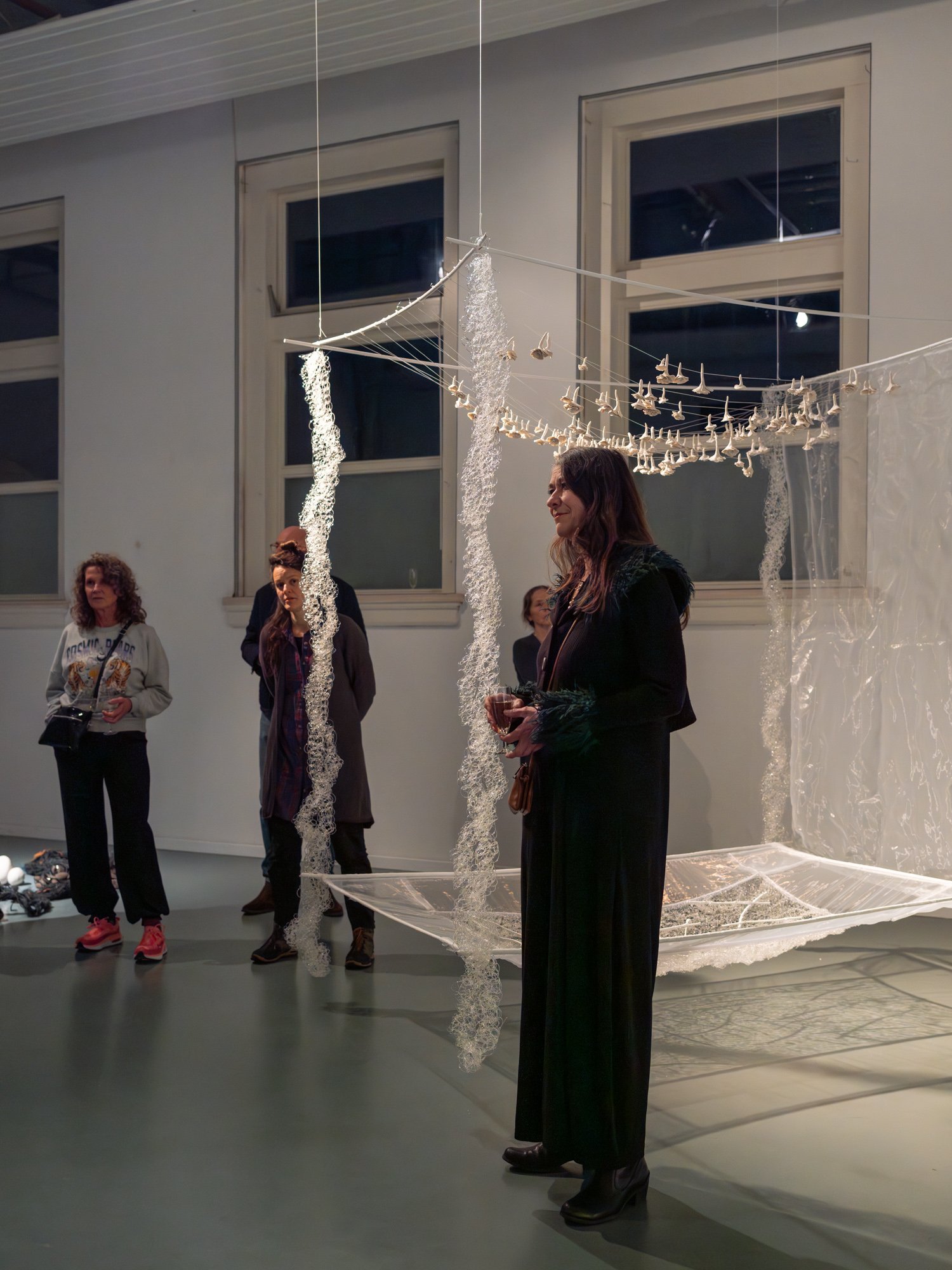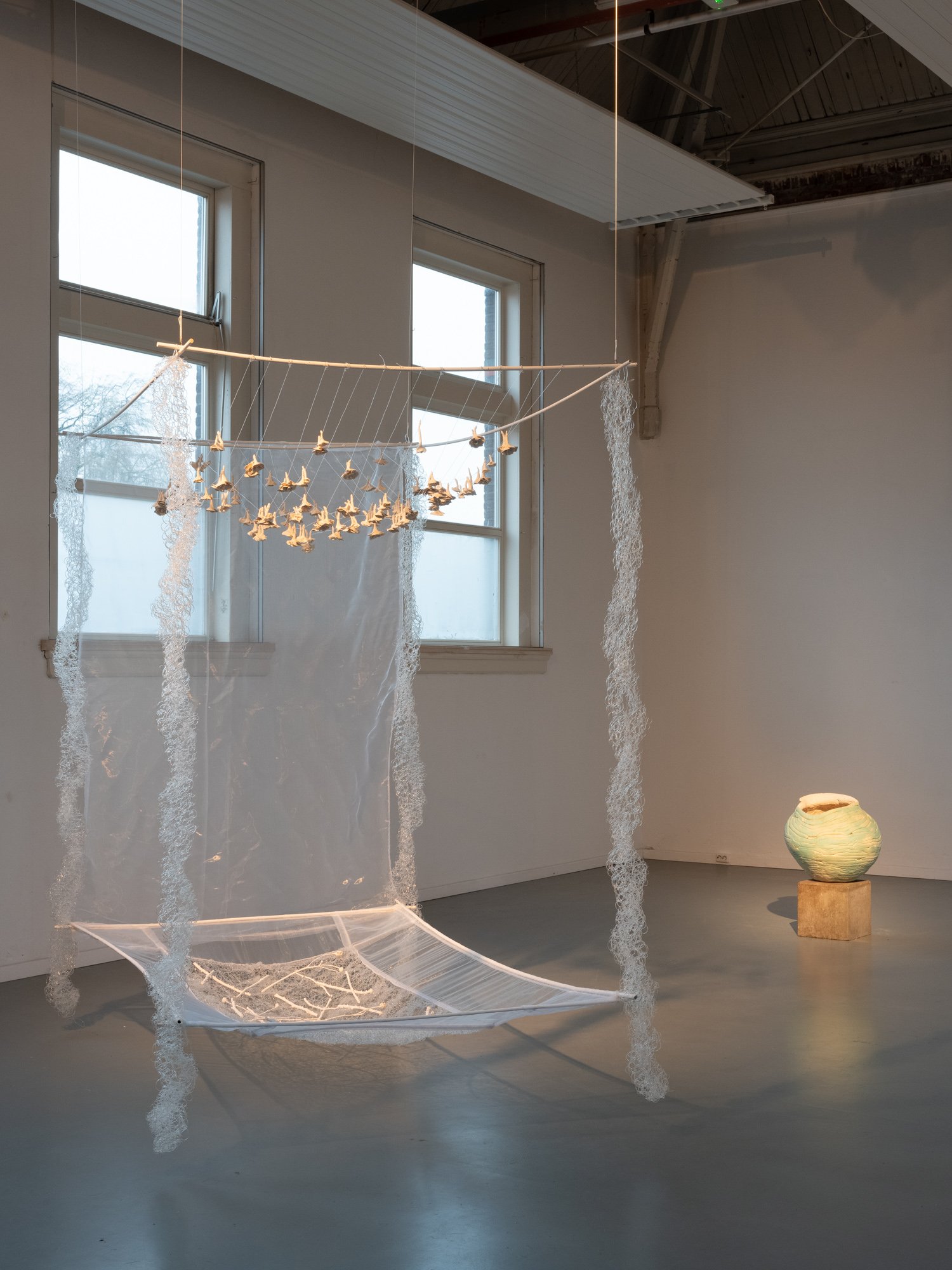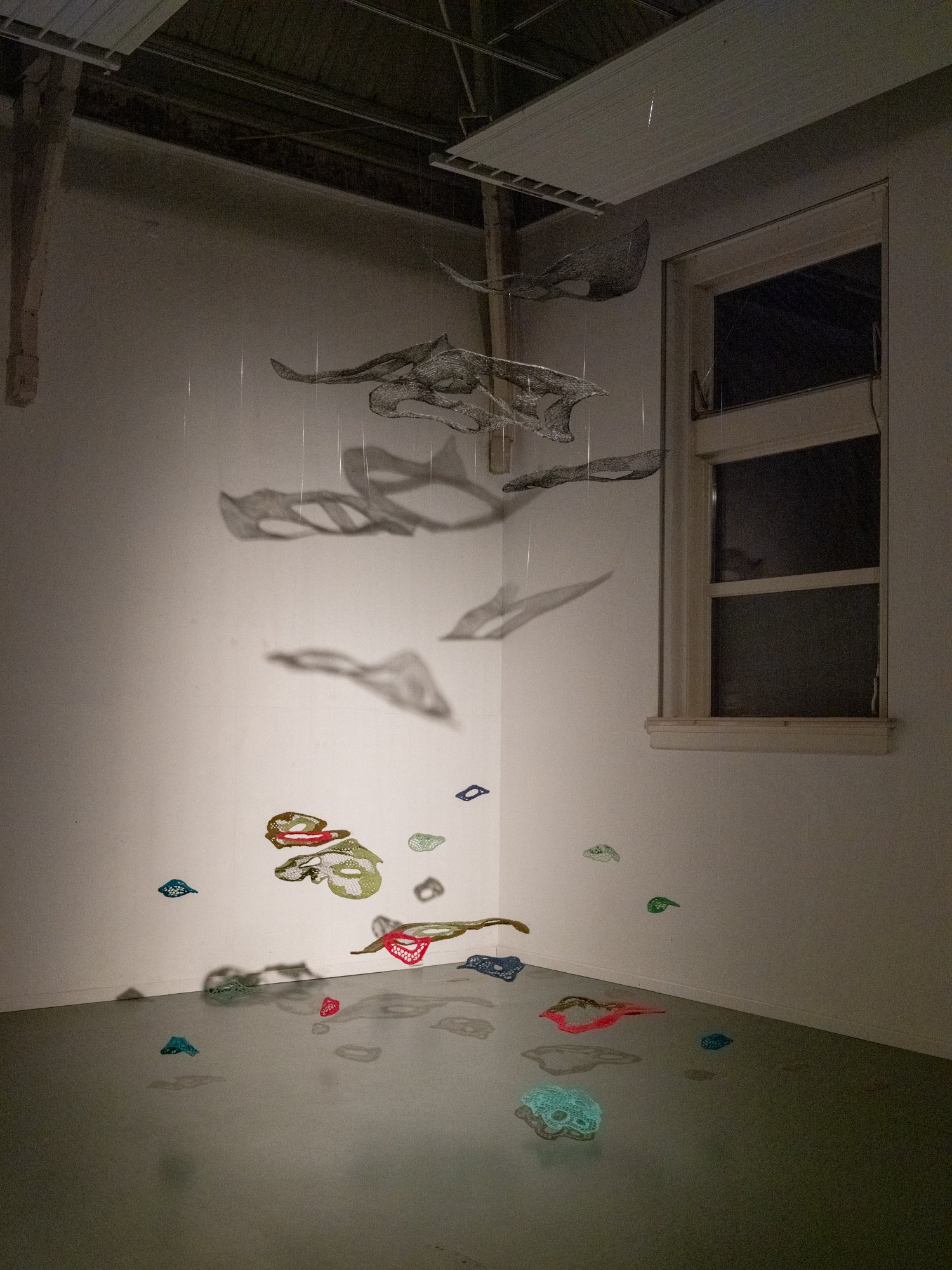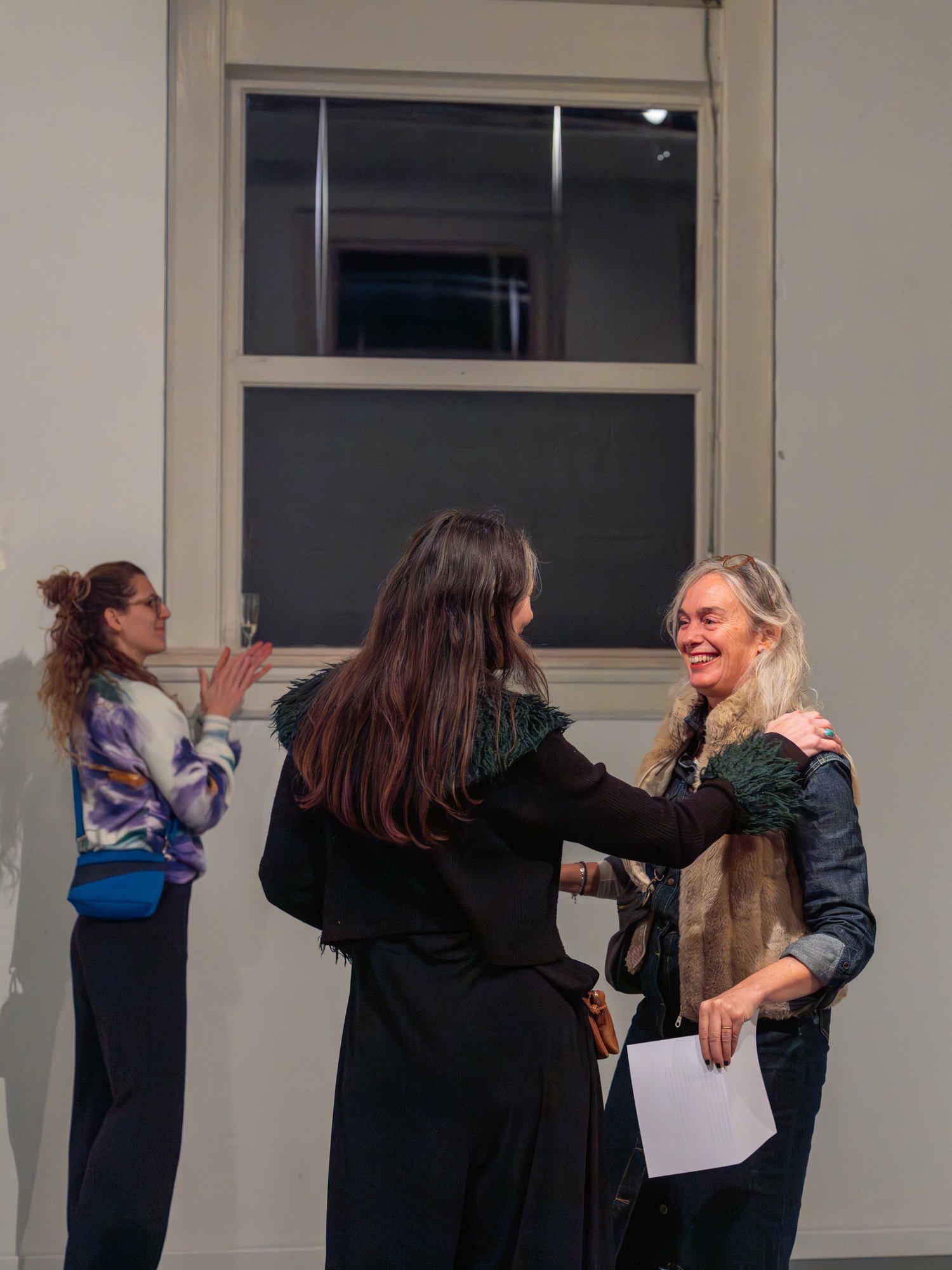ONDERSTROOM
(UNDERCURRENT)
Solo exhibition: Lili Berger
Opening: 30-11-2023 | 18.00/21.00h
Open: 1, 2, 3, 8, 9 & 10 December 2023
13.00 - 17.00 H
contact:
www.liliberger.nl
liliberger@gmail.com
Hosted by: See Lab
curated by: Catelijne Boele
“The Unknown”
The sea
The shores
The sound
Of breaking waves
The wind
Whispering
Windblown sand
In my face
The sand
Sticking on my skin
The smell
Of salt water
The silent force of
Short description:
‘UNDERCURRENT’
When the light travels from the sun, blue tones disperse once they reach the earth’s atmosphere. A grand blue horizon takes shape because of this colour that scatters into the sky. Something similar occurs once the light reaches the surface of the ocean. Red, yellow and green will be mostly absorbed, but blue travels all the way down, into its depths. The deeper the ocean, the deeper the colour blue will be.
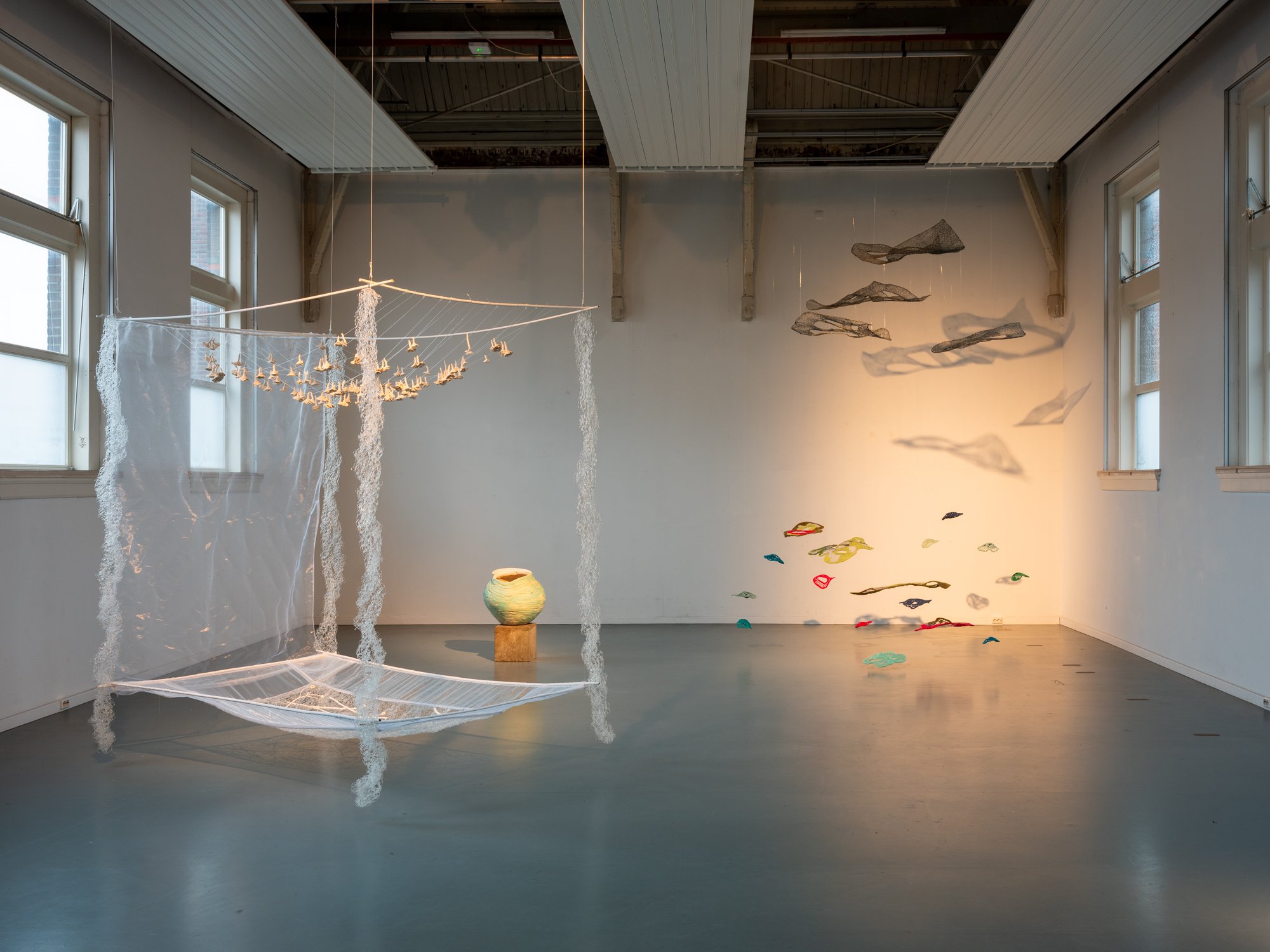

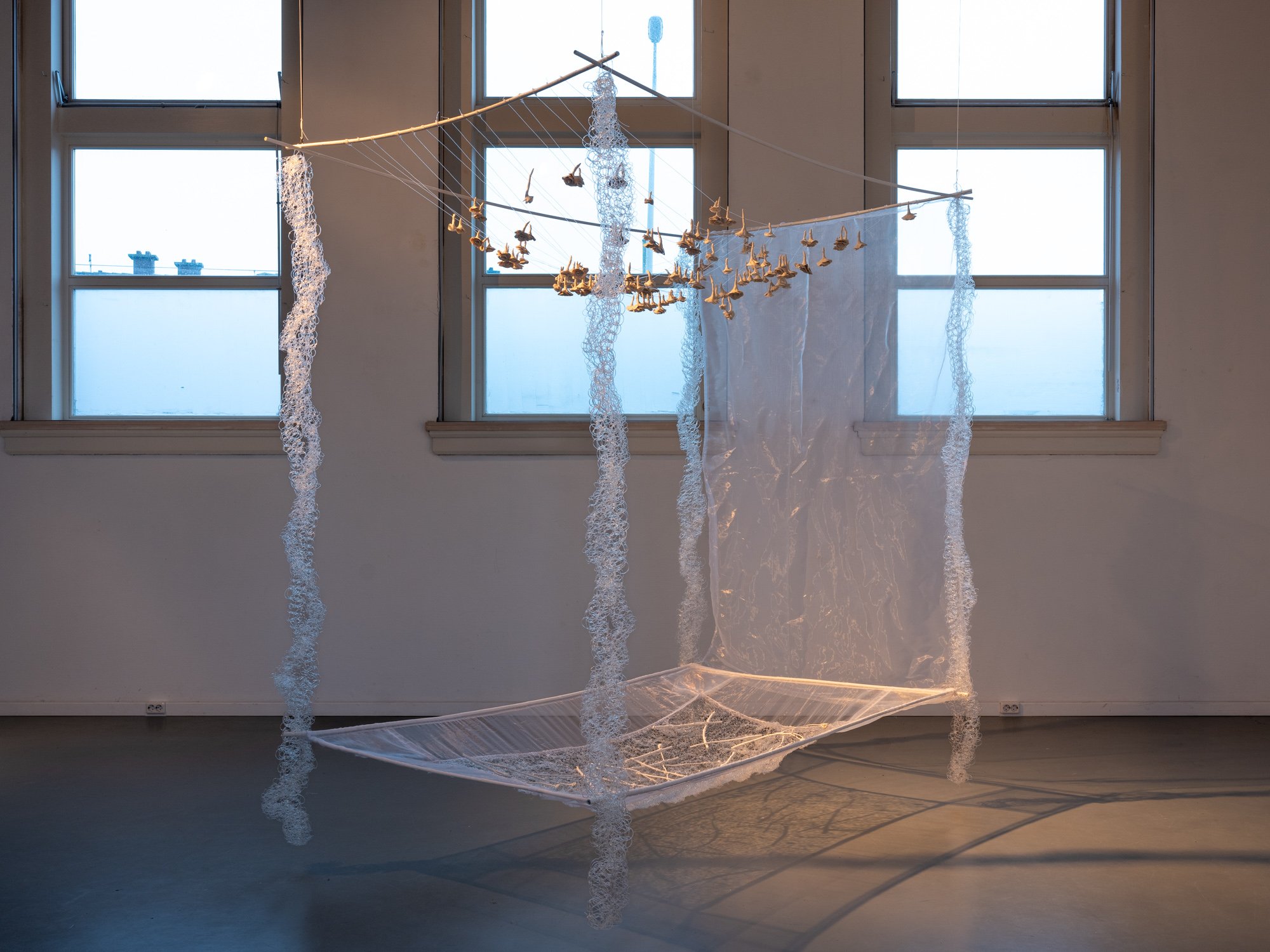
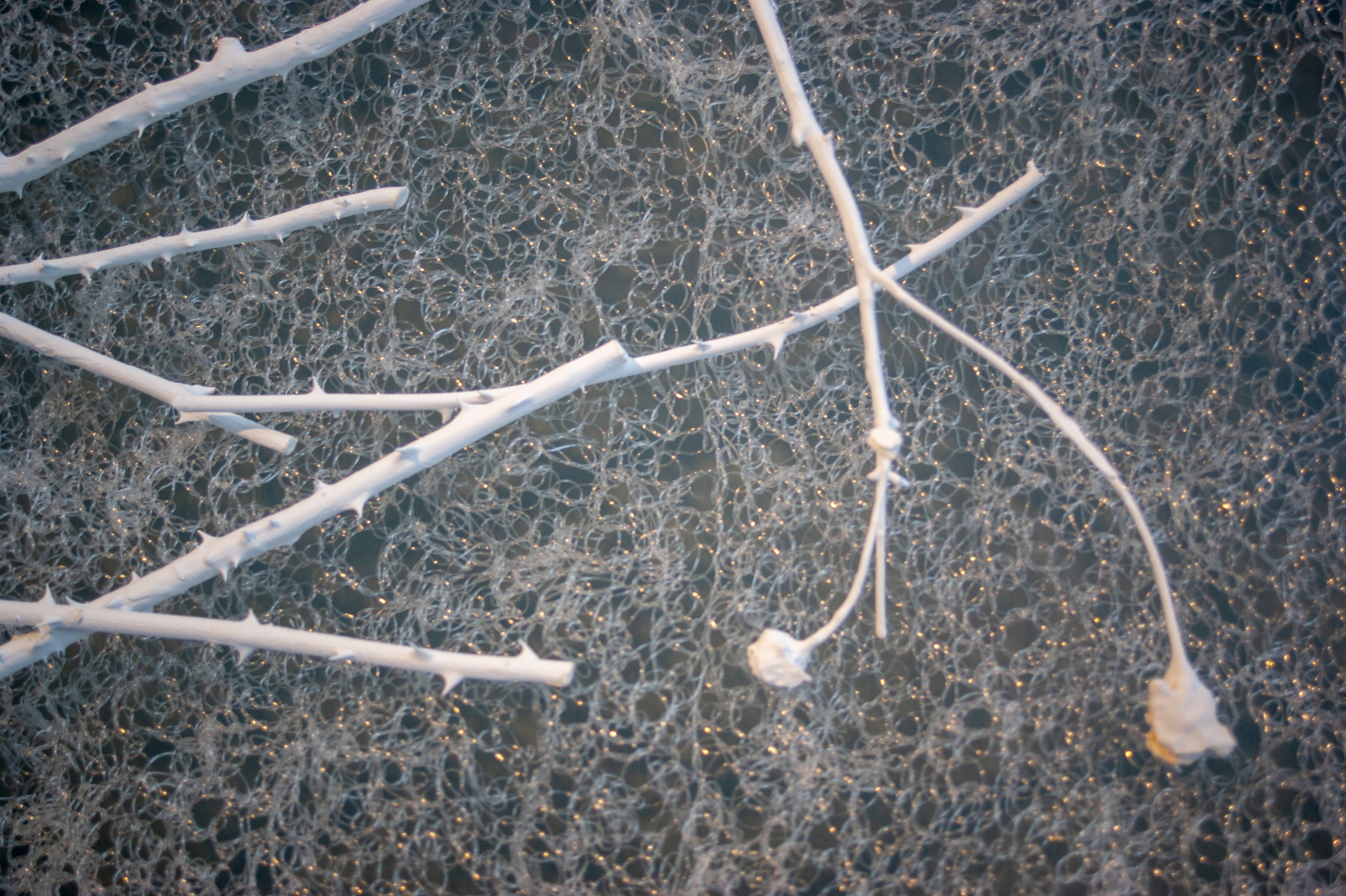
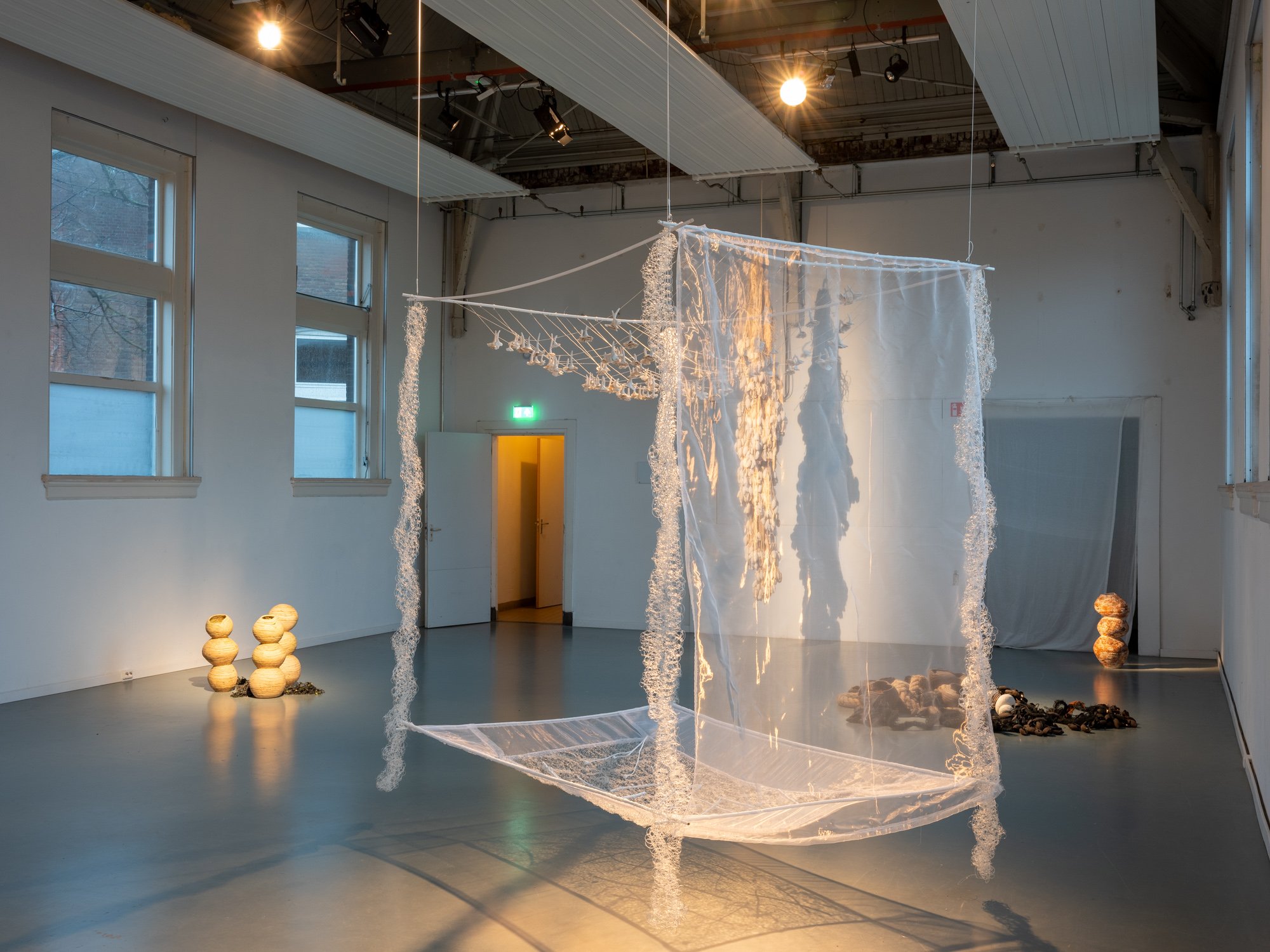
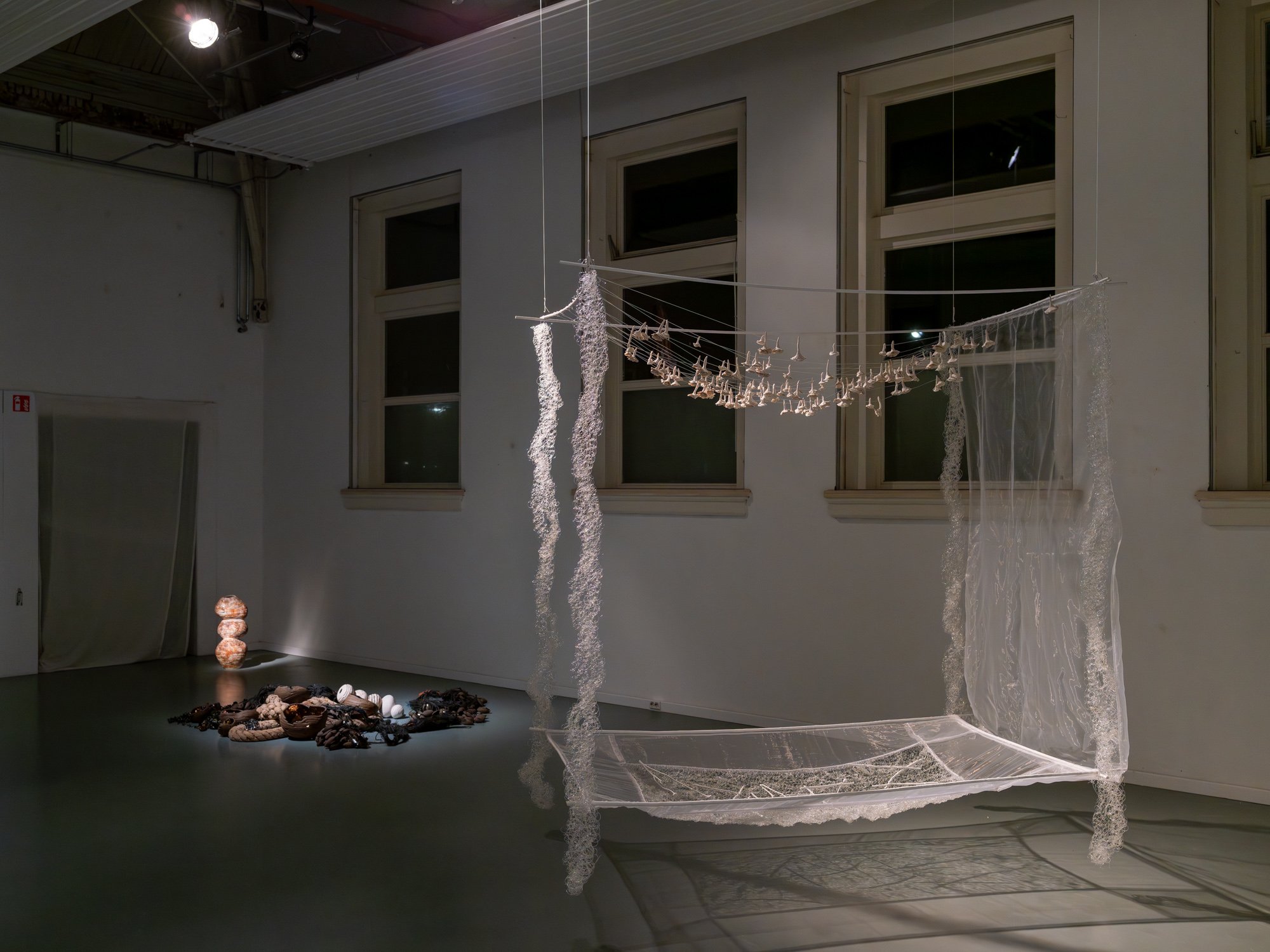
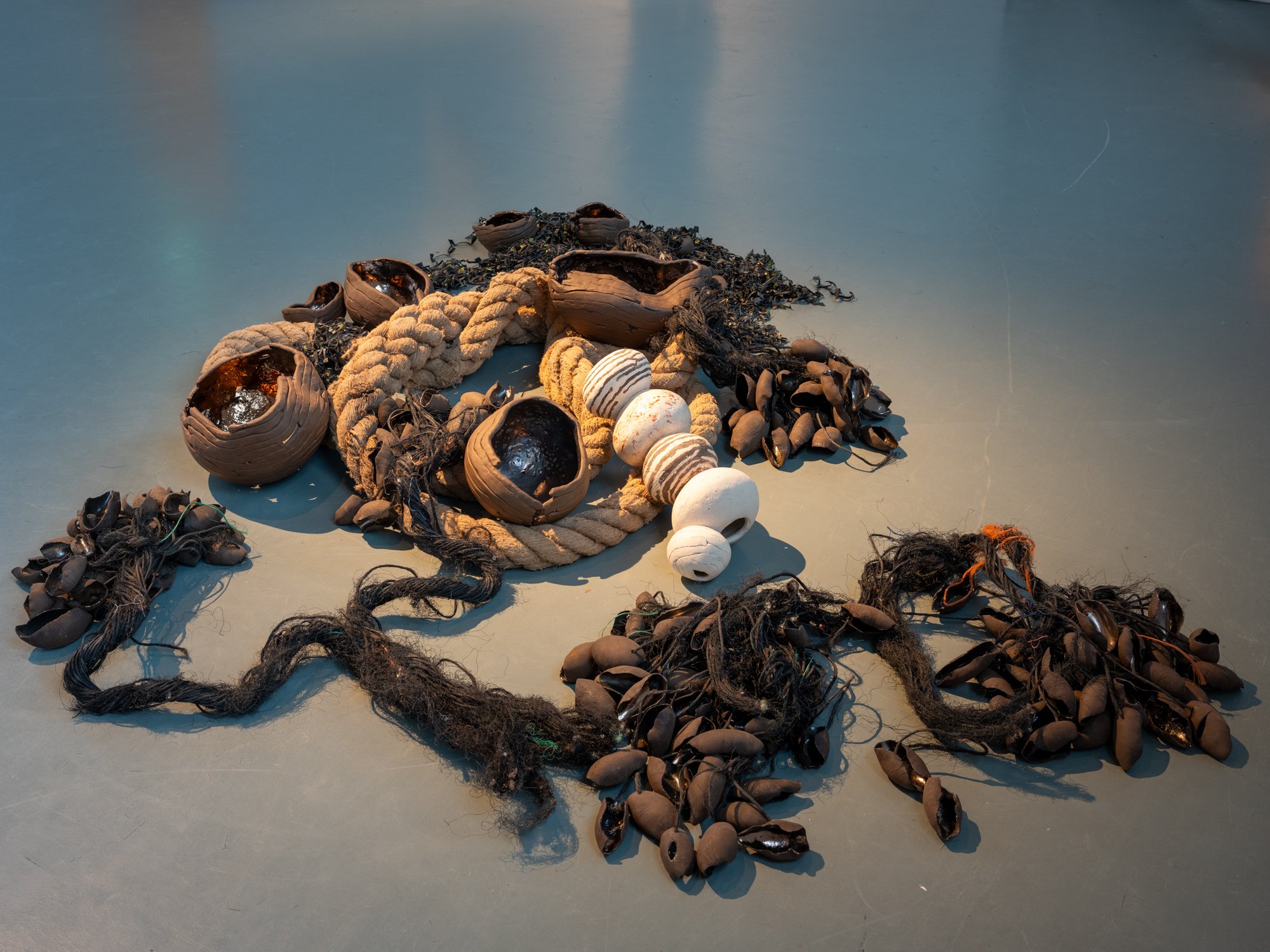
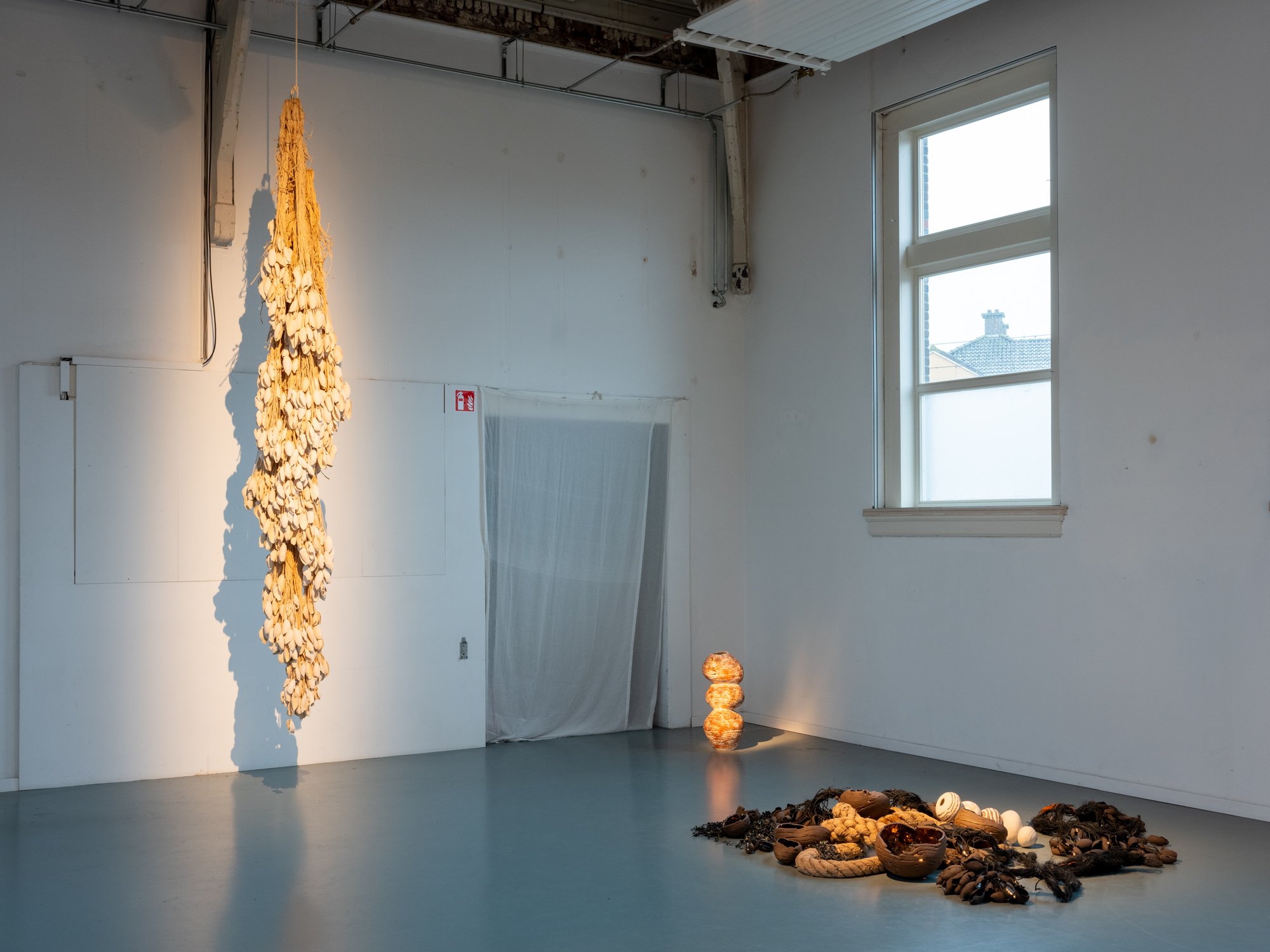

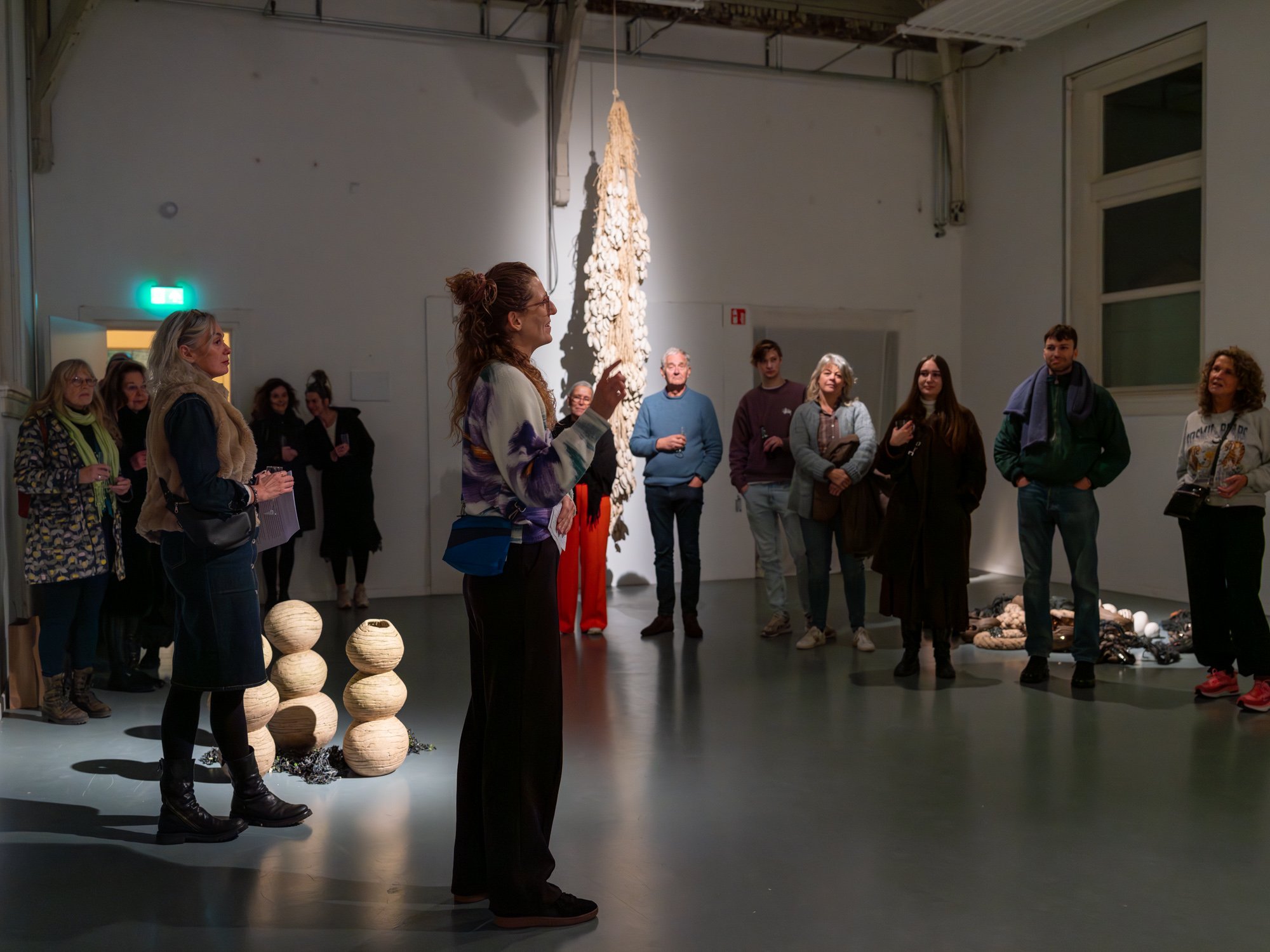

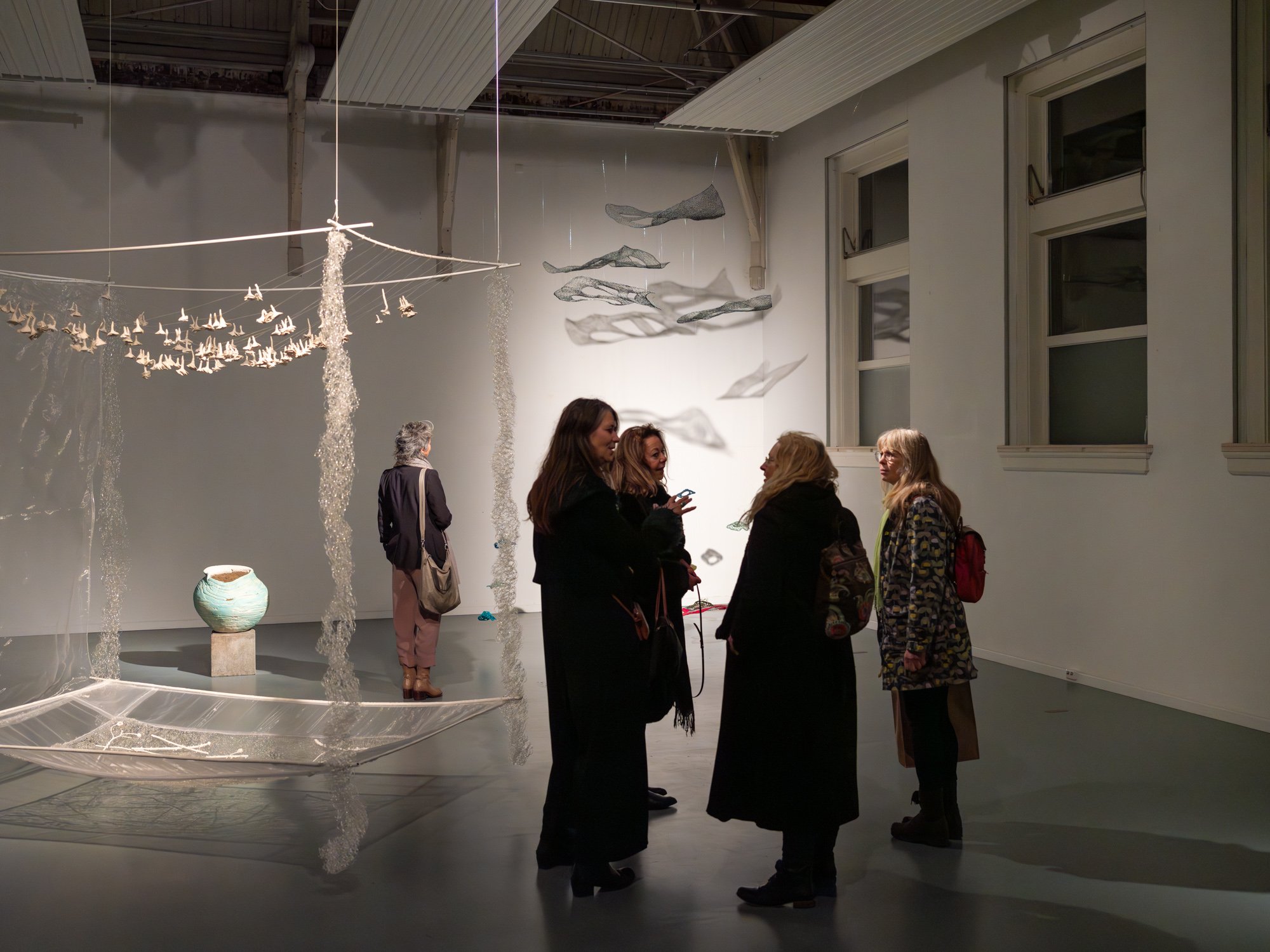
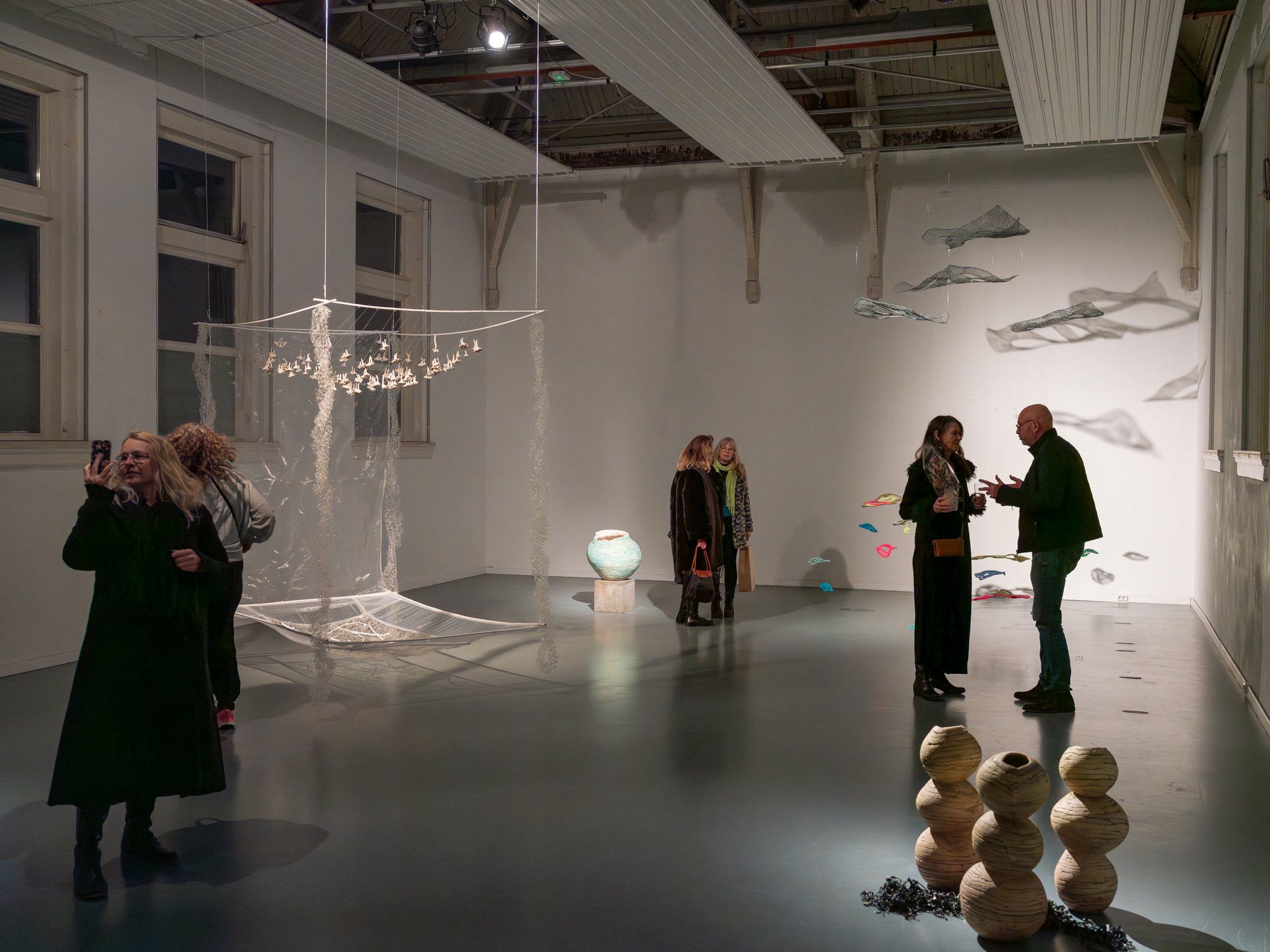
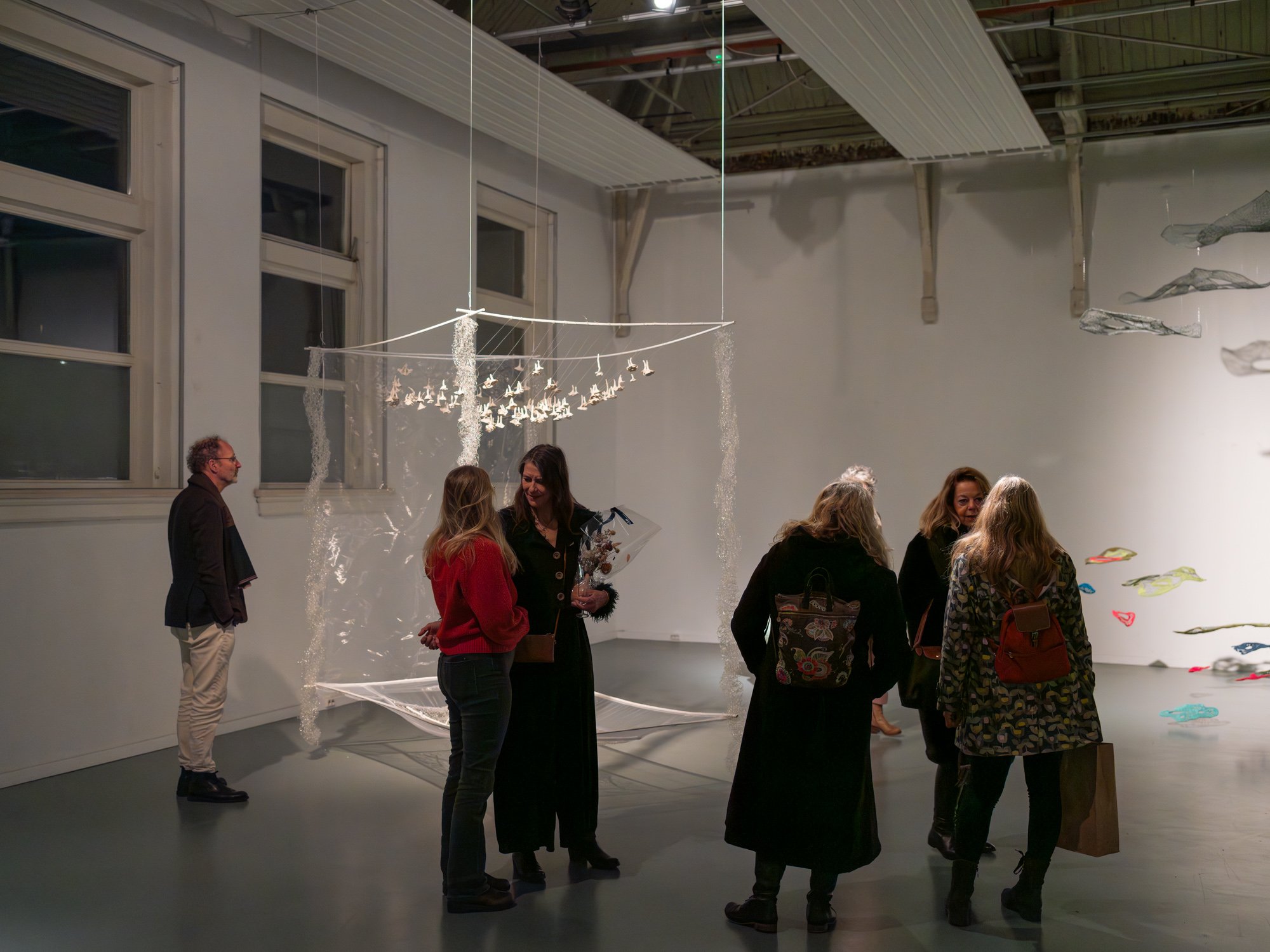
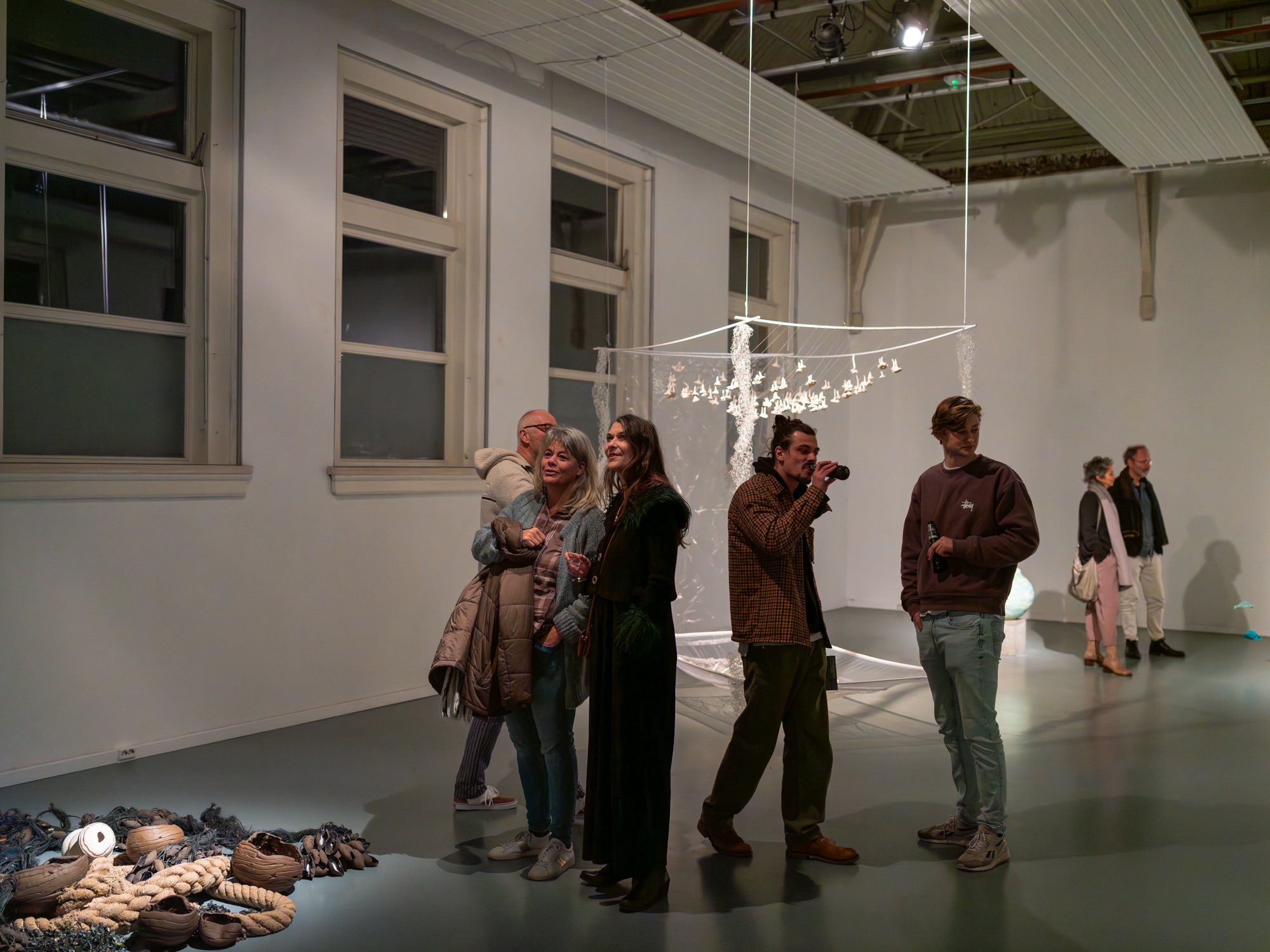
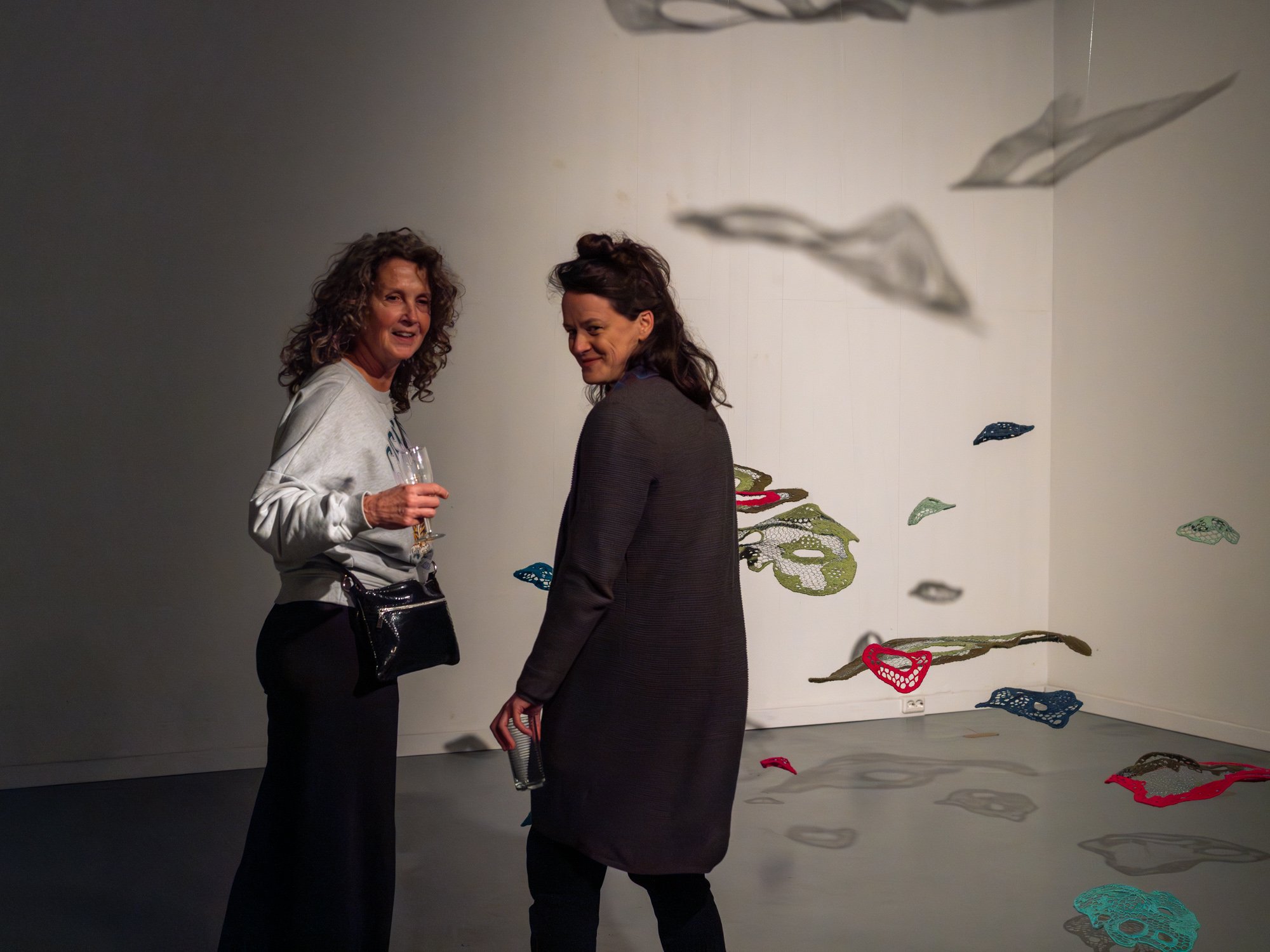
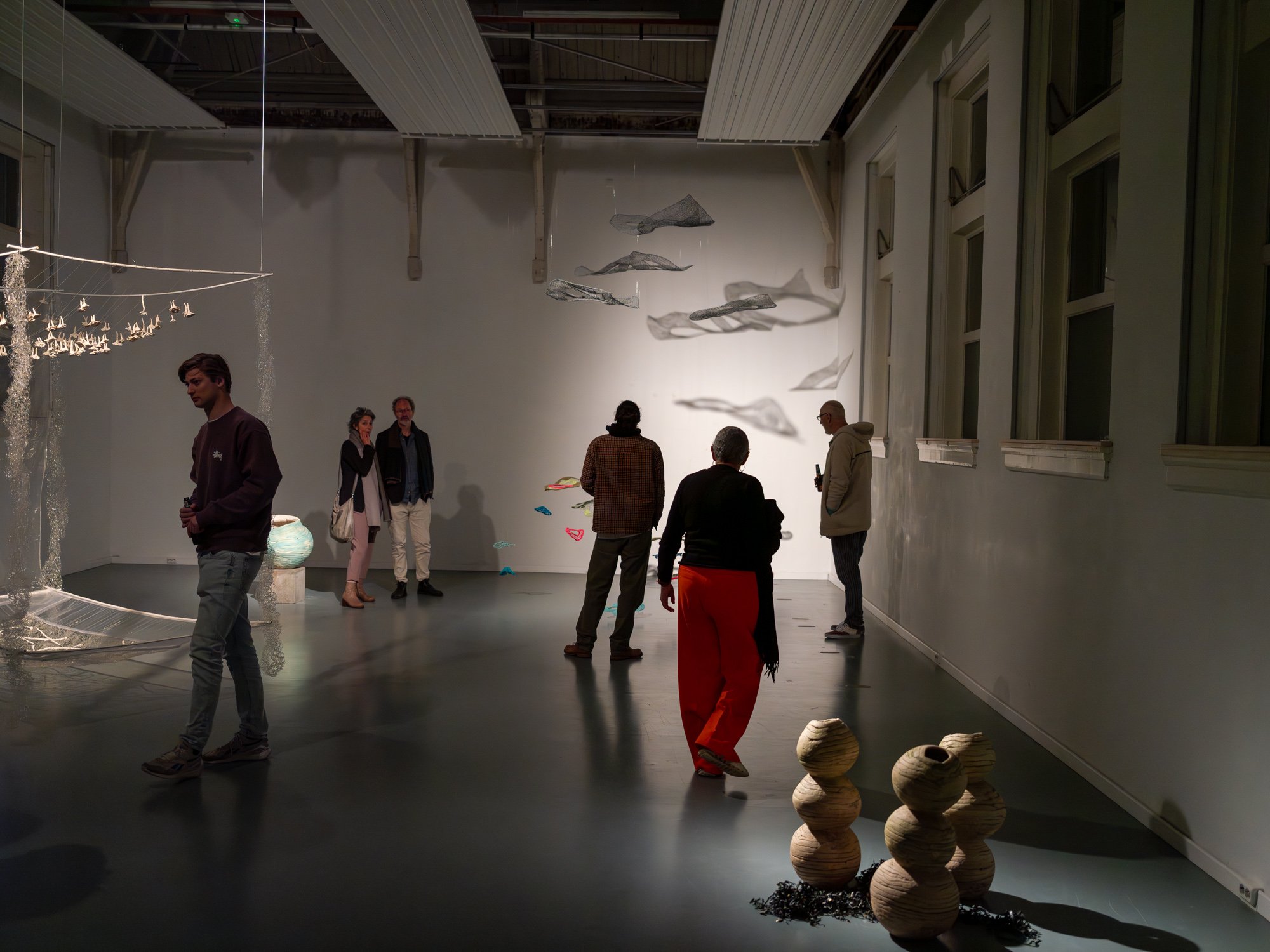
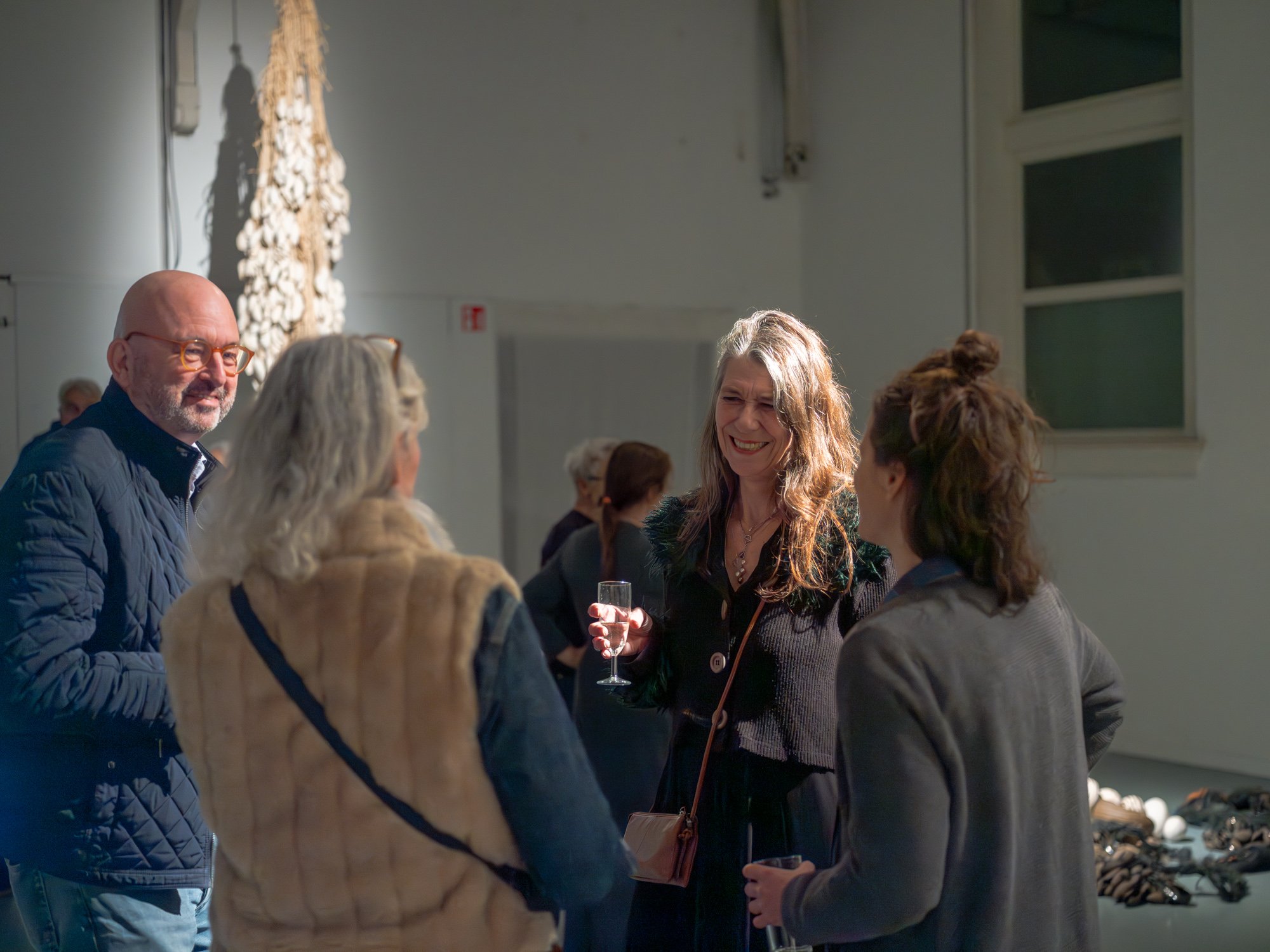
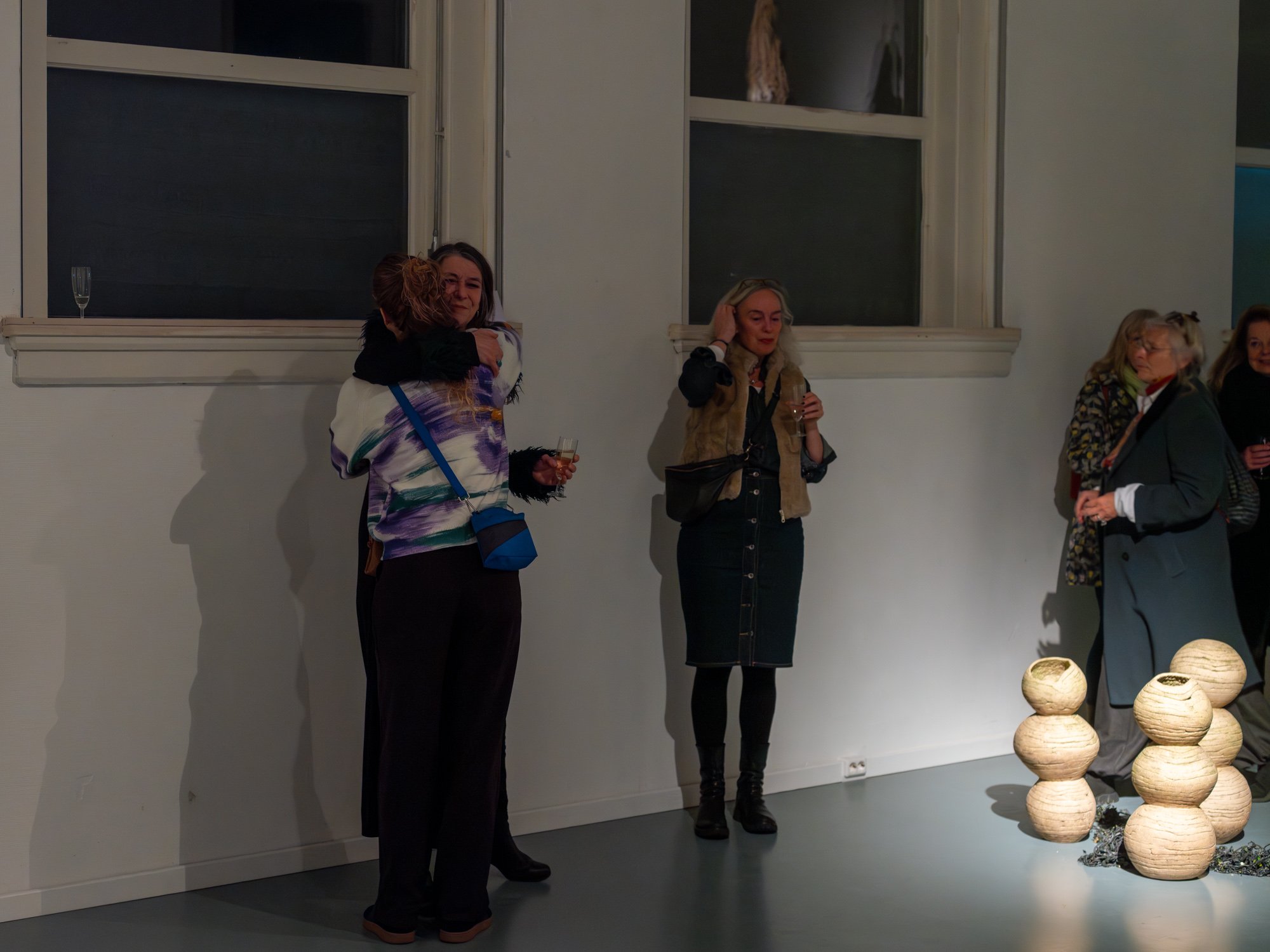

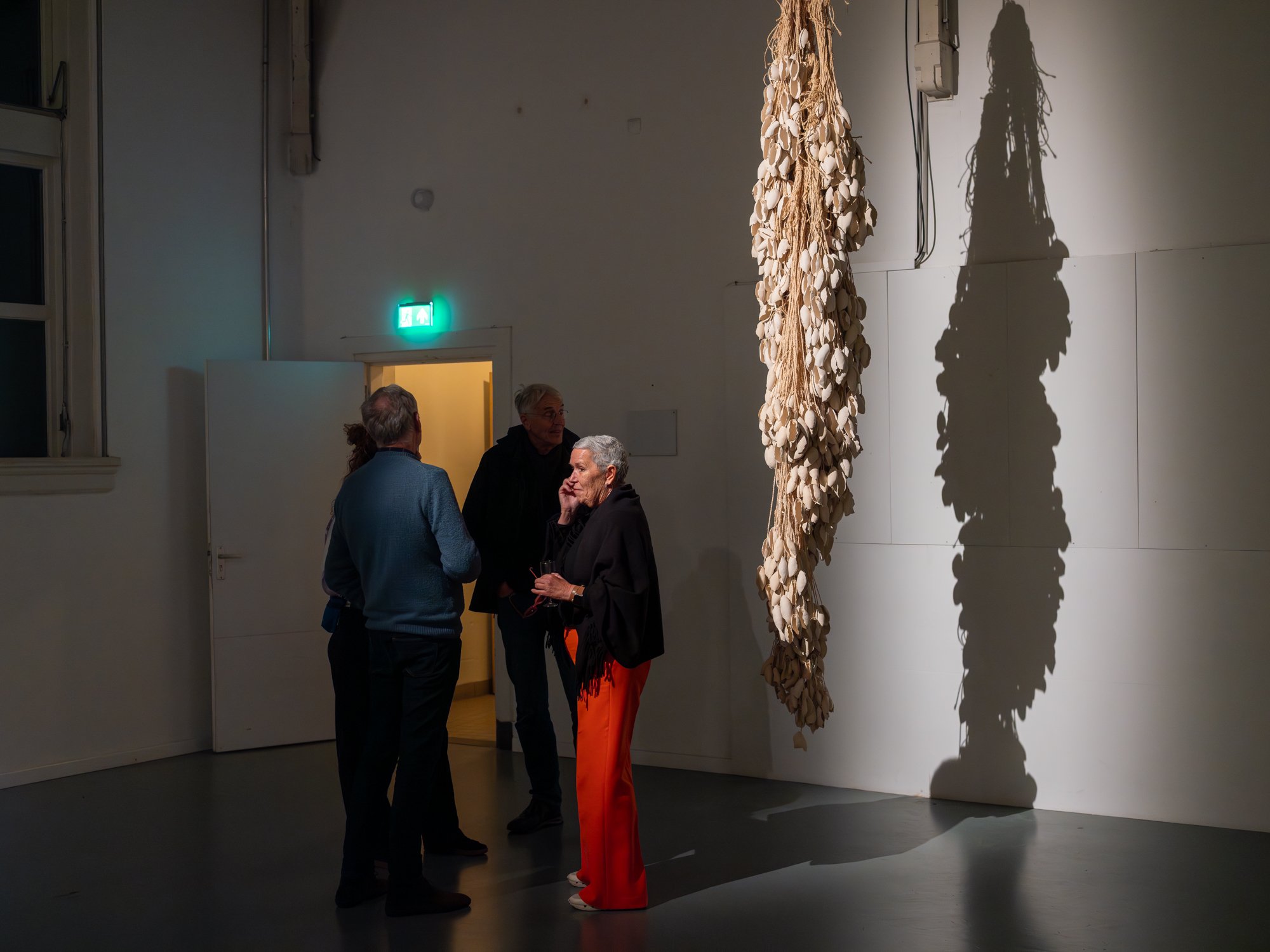
Gazing at the horizon and the clouds it holds, is as looking at the ocean and its waves; a longing for the unattainable that is both bewildering and comforting. ‘The world is blue at its edges and in its depths’[1], Rebecca Solnit beautifully states. The insurmountable distance between these environments and human beings, is captivating and something to endlessly obsess and contemplate over. There is still to this day, so much that is left undiscovered about the ocean and all the species it holds. Its mystery and opacity create not only space for speculation, but also for fantasy and wandering – getting lost in time and thoughts. As such, its inherent distance may, paradoxically, bring us closer to the edges of the world through the process of imagination.
These are elements that capture my mind whilst thinking about Lili Berger and her work as well. Within her artistic practice, Lili allows her mind to roam whilst surrendering herself to the material. By creating endless shapes and forms, which often remind of sea-like creatures, she lets go of the notion of time and sinks deeply into her subconsciousness. Here, she composes her own introspective landscape, where imagination, emotions and intuition are able to flow freely into their tactile translations. As Lili surrenders to the material, she surrenders to the invisible elements that move her from within – creating space for a sense of freedom which reminds of the endlessness of the ocean itself.
Lili Berger’s solo-exhibition ‘Undercurrent’ invites visitors to discover all the elements that move and wander below the surface. With a beautiful sensitivity for materials such as ceramics, embroidery and different type of wire, she continues to expand her unique artistic and artisanal expression. The joy Lili feels whilst making work, sparks through in the way she treats the material, as it is loaded with so much thought, feeling and intention in every detail. It reminds me how important it is to let go and allow yourself to feel free within your emotions. To let them be as clouds in the sky or waves in the ocean - constantly moving, shaping, shifting and turning. Constantly fading and reappearing around the conscious surface.
You are warmly invited to experience and celebrate the mesmerising world that Lili Berger creates within her artistic work.
[1] Rebecca Solnit: ‘A field guide to getting lost’ (2017), Canongate Books, page 29
Korte beschrijving:
‘ONDERSTROOM’
Blauwe tonen verspreiden zich, wanneer het licht dat vanaf de zon naar beneden reist de atmosfeer van de aarde raakt. Een uitgestrekte, blauwe horizon vormt zich door de kleur die door de lucht verspreidt. Iets vergelijkbaars gebeurt wanneer het licht het oppervlak van de oceaan raakt; rood, geel en groen zullen voor een groot deel geabsorbeerd worden, maar blauw reist naar beneden, richting de diepte. Hoe dieper de oceaan, des te dieper de kleur van het blauw.
Kijken naar de horizon en de wolken die hier bewegen, is als kijken naar de oceaan en diens golven; een verlangen voor het onbereikbare, dat verbijstert en troost tegelijkertijd. ‘De wereld is blauw in diens grenzen en dieptes’[1], is wat Rebecca Solnit zo mooi omschrijft. De onoverkoombare afstand tussen deze plekken en mensen, is iets om onszelf eindeloos over te verwonderen. Er is tot op de dag van vandaag nog zoveel te ontdekken over de oceaan en alles wat hier leeft. Als een sluier omhult het donkere water de zichtbaarheid van alles dat hier voortbeweegt. Dit creëert niet alleen ruimte voor speculatie, maar ook voor fantasie - een mogelijkheid om jezelf te verliezen in gedachten en tijd.
Zodanig kan de afstand ons, op paradoxale wijze, dichter bij de randen van de wereld brengen, door de kracht van verbeelding. Dit zijn flarden van mijn gedachten wanneer ik nadenk over Lili Berger en haar werk. Lili laat zich leiden door haar intuïtie terwijl zij zich overgeeft aan het materiaal. Door het creëren van eindeloze vormen – die vaak doen denken aan zee-achtige organismen – laat zij het idee van tijd los en zinkt zij diep in haar onderbewustzijn. Hier componeert zij haar eigen introspectieve landschap, waar haar verbeelding, emoties en intuïtie vrijelijk in hun tactiele vertalingen kunnen vloeien. Wanneer Lili zich overgeeft aan het materiaal, geeft zij zichzelf tevens over aan de onzichtbare elementen die haar van binnenuit drijven. Hierdoor wordt er ruimte gecreëerd voor een gevoel van vrijheid, een gevoel dat doet herinneren aan de eindeloosheid van de oceaan zelf.
Lili Berger’s solotentoonstelling ‘Onderstroom’ nodigt bezoekers uit om alle elementen te ontdekken die zich onder het oppervlak voortbewegen. Met een prachtige gevoeligheid voor materialen zoals keramiek, borduren en verschillende toepassingen van draad, blijft zij haar unieke artistieke en ambachtelijke expressie ontwikkelen. Het geluk dat Lili omarmt wanneer zij werk maakt, schittert door de manier waarop zij het materiaal behandelt – elk detail is geladen met zoveel gedachten, gevoelens en intentie. Het herinnert aan het gevoel van loslaten en je vrij voelen in je eigen emoties. Om ze als wolken in de lucht of golven in de oceaan te laten zijn – voortdurend in beweging, verschuiven en draaien. Voortdurend vervagend en opnieuw verschijnend, rondom het bewuste oppervlak.
[1] Rebecca Solnit: ‘A field guide to getting lost’ (2017), Canongate Books, pagina 29
Text/ curation: Catelijne Boele
Photography: Jacob Ganslmeier & Lili Berger



